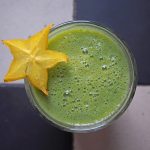There are multiple forms of juvenile arthritis. The most common one is juvenile idiopathic arthritis, or JIA. This condition affects children and teens. It is a chronic form of arthritis, however as children get older they can grow out of this condition completely. For others though it can change into other forms of arthritis as they get older.
JIA is usually diagnosed between the ages of 2 and 5, but can be diagnosed as early as 18 months and as late as 16 years.
Causes are unknown. It is an autoimmune disorder. There is a chance that JIA runs in some families, but in most cases it does not. Other causes of the condition are how your immune system responds to infections, or having an infection could trigger this condition.
There are different types of JIA.
The least common type is systemic JIA. This is when a child has arthritis in one or more joints. There is usually a fever and rash that come and go as well as swollen lymph nodes. This type can also cause problems with the heart, lungs, and blood.
Another type of JIA is polyarticular JIA. This is when there are five or more joints with arthritis found in the first six months of the disease. It can cause inflammation in the eyes. This type will also have a rheumatoid factor of either RF-positive or RF-negative.
Oligoarticular JIA is when a child will have five or fewer joints in the first six months of the disease. More joints may become affected later on which would cause this to be categorized as extended oligoarticular JIA. If no other joints are affected then it is considered persistent. This type may also cause inflammation in the eyes.
Enthiesitis- related JIA is when the tendons and ligaments connect to bone and arthritis. This normally affects the hips, knees, and feet. Inflammation in the eyes and inflammatory bowel disease are also common with this type.
Psoriatic JIA is a type of JIA that affects people who also have psoriasis. Psoriasis is a skin disorder where thick red plaques grow on skin. Inflammation in the eyes can occur. To have arthritis and psoriasis you have to have either inflammation in fingers or toes, pits or ridges in fingernails, or a first degree relative with psoriasis.
Undifferentiated JIA is when you have symptoms of the condition but your symptoms don’t fit into any of these types.
Symptoms
Overall symptoms of JIA are pain. This could be joint pain that may cause a limp in a child especially in the mornings or after a nap.
Swelling is another common symptom. Swelling may not be noticeable except in large joints such as the knee.
Stiffness which can cause clumsiness can also be a symptom that too can be more present in the mornings or after a nap.
Fever, swollen lymph nodes, and a rash can also be present with JIA.
You may notice your child has trouble holding a crayon. This can be a sign of arthritis in their small joints.
The joints that are most affected by JIA are knees, ankles, wrists, elbows, and small joints in the hands. Symptoms can vary vastly between the types and ages of the children.
Diagnosis
JIA is normally diagnosed between the ages of two and five. Earlier and later diagnoses can occur.
JIA is diagnosed usually starting with a physical exam. X-rays can be done to check for arthritis in the joints that are painful. Blood tests can check for anemia, inflammation, markers for arthritis, or autoimmune illness.
Treatment
The goal of treatment for children with JIA is to reduce pain and stiffness. Treatment is also to help them be able to live a normal lifestyle. What type of treatment depends on the age, symptoms, and general health of the child. Severity of the condition can also play a factor in how it is treated.
Medicines that can help first are NSAIDs. These can help with pain and inflammation. Another medication are disease- modifying antirheumatic medicines that can ease inflammation. Corticosteroids can also help reduce inflammation and severe symptoms.
Other treatment options are physical therapy, and occupational therapy. These can help improve mobility as well as ability to move and accomplish tasks.
Nutrition counseling can help eliminate foods that increase inflammation in the body and to add a lot of anti-inflammatory foods into your child’s diet.
Regular eye exams are important when inflammation in the eyes is present.
Regular exercise and weight control is important to make sure no extra stress is added to any joints.
Getting enough rest.
Takeaway
Juvenile idiopathic arthritis is an autoimmune disorder that causes your immune system to attack the joints. It is the most common form of arthritis in children.
Children who have JIA live normal lives. Many of them may grow out of this condition as they get older. In some instances it can affect bone development.
Treatment can help alleviate pain and reduce stiffness so children can participate in normal everyday activities.
A sign of juvenile arthritis is clumsiness or limping after a nap. Children as young as 18 months can suffer from arthritis pain. #HealthSurgeon
Purium’s Immune Shield is the all-natural, proactive support for your child’s immune system. Just a few drops can keep children healthier as well as re-balance little bodies when they aren’t at 100% strength.
-
Supports the immune system
-
No pharmaceuticals
-
Alcohol-free concentrate safe for children
Sources:
https://www.healthychildren.org/English/health-issues/conditions/chronic/Pages/Juvenile-Idiopathic-Arthritis.aspx?gclid=Cj0KCQiA4uCcBhDdARIsAH5jyUnKDe0Cf05kn6kL_nwjC3U0xa98wPjIk0c0qam7XjLy4ClV3Fs7OIgaAv54EALw_wcB
https://www.mayoclinic.org/diseases-conditions/juvenile-idiopathic-arthritis/symptoms-causes/syc-20374082
https://www.hopkinsmedicine.org/health/conditions-and-diseases/arthritis/juvenile-idiopathic-arthritis
https://kidshealth.org/en/parents/jra.html
https://medlineplus.gov/genetics/condition/juvenile-idiopathic-arthritis/









